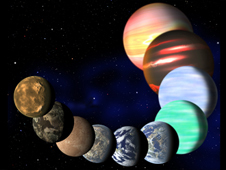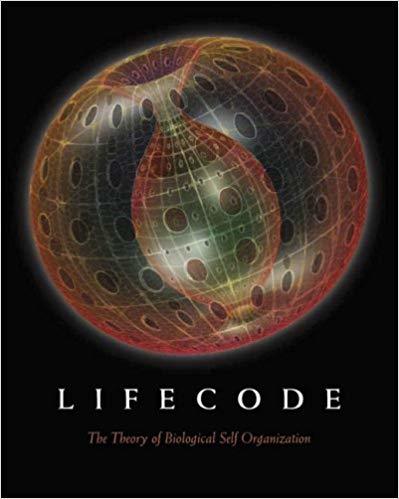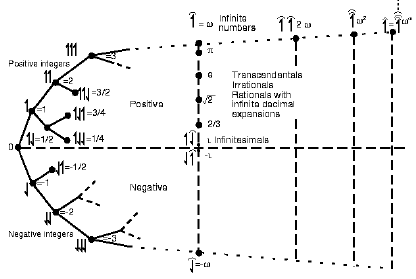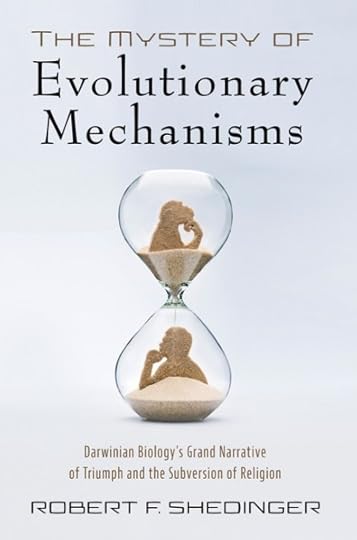Michael J. Behe's Blog, page 439
August 25, 2019
Psych prof concedes, ID is not “absurd”
This open-access 2017 paper by psychologist Raymond M. Bergner of Illinois State University popped into News’s inbox this morning. It seems to dip a toe into rationality while considering the question of design in nature:
Let me say from the outset that this is not an essay arguing for intelligent design. Rather, it is a protest against a certain attitude. Everywhere I turn today, I hear voices, with varying degrees of smugness and contempt, telling me that intelligent design — the position that there is some ordering intelligence behind the whole cosmic shooting match — is straightforwardly ridiculous. “No intelligent person believes such a thing.” “How unscientific!” “It’s always a cover for a religiously based, evolution-denying creationism, trying to sneak in the back door in the guise of science.” Highly visible, scientifically informed public intellectuals such as Richard Dawkins, Stephen Hawking, Daniel Dennett, and Sam Harris pop up everywhere, telling us that, if any proposition about the origins or design of nature is unsupported (or unsupportable) by scientific evidence, that proposition is ipso facto without any merit or legitimacy whatsoever. Since intelligent design fails this requirement, they assert, it is unworthy of our entertaining it even as a possibility, much less a belief.
I do not wish to argue that intelligent design is true. I don’t know if it’s true. I also do not wish to argue that it is a scientific position. I believe that it is not, but is instead an empirically undecidable, metaphysical one. I wish only to argue, contrary to the current intellectual zeitgeist, that it is neither stupid nor ridiculous either to believe in it or to entertain it as a possibility. I am referring here, not to a version of intelligent design that claims that the world was created 6000 years ago just as we find it today, but to one stating simply that there is now, or may have been at some time in the past, an ordering intelligence behind the structure of the universe and its contents. I also want to argue that the position most commonly posed in opposition to it at the cosmic level (which is where I will focus), which I shall refer to as “accidentalism,” is not, as many would have it, itself a scientifically open and shut case.
Raymond M Bergner, Intelligent_Design_Maybe_True_Maybe_False_But_Not_Absurd” at ResearchGate
One wants to respond: ID is in good shape compared to psychology. There is massive evidence for design in nature whether the establishment can accept it or not. Not so much evidence for the psych concepts that have made the discipline a Sokal hoax laughing stock.
See also: Putting a respectable face on persecuting the social justice science hoaxers
Embattled “Social Sciences Hoax” Prof Is Not A Hero, He’s A Canary
Social Science Hoaxer’s Job At Risk For Revealing “Bias”
Sokal hoaxes strike social science again
Exposing gender studies as a Sokal hoax
Social Science Hoax Papers Is One Of RealClearScience’s Top Junk Science Stories Of 2018
and
Alan Sokal, Buy Yourself A Latte: “Star Wars” Biology Paper Accepted
“Motivated reasoning” defacing the social sciences?
At the New York Times: Defending the failures of social science to be science Okay. So if we think that — in principle — such a field is always too infested by politics to be seriously considered a science, we’re “anti-science”? There’s something wrong with preferring to support sciences that aren’t such a laughingstock? Fine. The rest of us will own that and be proud.
What’s wrong with social psychology , in a nutshell
How political bias affects social science research
Stanford Prison Experiment findings a “sham” – but how much of social psychology is legitimate anyway?
A BS detector for the social sciences
All sides agree: progressive politics is strangling social sciences
and
Back to school briefing: Seven myths of social psychology: Many lecture room icons from decades past are looking tarnished now. (That was 2014 and it has gotten worse since.)
Follow UD News at Twitter!
Follow UD News at Twitter!
Copyright © 2019 Uncommon Descent . This Feed is for personal non-commercial use only. If you are not reading this material in your news aggregator, the site you are looking at is guilty of copyright infringement UNLESS EXPLICIT PERMISSION OTHERWISE HAS BEEN GIVEN. Please contact legal@uncommondescent.com so we can take legal action immediately.
Plugin by Taragana
Mark Steyn on the politicization of science journals

Commentator Steyn noticed this trend in an article in a recent edition of Nature in relation to climate change, where Nature, to judge from a recent paper, hopes to end the debate rather than win it:
As Judith [Curry] herself puts it:
“Apart from the rank stupidity of this article and the irresponsibility of Nature in publishing this, this paper does substantial harm to climate science.”
But Nature doesn’t care. It suffices for peer-reviewed science in the third millennium:
“It’s time to stop giving these people visibility, which can be easily spun into false authority,” Professor Alex Petersen said. “By tracking the digital traces of specific individuals in vast troves of publicly available media data, we developed methods to hold people and media outlets accountable for their roles in the climate-change-denialism movement, which has given rise to climate change misinformation at scale.”
Gotcha. So you’re just another guy in the shut-up business, a phenomenon of our times rising far more rapidly than sea levels in the Maldives. “Consensus enforcement” (in Dr Curry’s very useful formulation) stalks our public discourse in everything from immigration to Islam to transgender bathrooms. But climate alarmism is (for the moment) unique in attempting to pervert the scientific method to advance its political goals – to declare that science proves that a scientist, merely by attracting the attention of a Vancouver blogger, is transformed into a contrarian who should never be heard from again.
Mark Steyn, “End of the Peer Show” at MarkSteyn.com
It sounds like, in their ideal scenario, the rest of us would never know, except for our own experience, if what they are saying is incorrect.
What science looks like when it gets Woke: Guardian Axed Science Blog, Spreads Sciencey Rumors Instead
When Medical Journals Get Woke…
Why has a historic medical publication gone weird
New England Journal of Medicine, seeking new editor, urged to get woke Journal editor: “The main job of journals will not be to disseminate science but to ‘speak truth to power,’ encourage debate, campaign, investigate and agenda-set — the same job as the mass media.
Lancet: Why has a historic medical publication gone weird?
and
Was Thomas Kuhn not so “evil” after all? Philosopher of science: If Errol or Kripke or anyone can tell me something absolutely objective and unchanging about what’s out there in the natural world, I sincerely want to hear and believe that. Maybe I should (re)turn to Jesus. (Huh?)
Follow UD News at Twitter!
Copyright © 2019 Uncommon Descent . This Feed is for personal non-commercial use only. If you are not reading this material in your news aggregator, the site you are looking at is guilty of copyright infringement UNLESS EXPLICIT PERMISSION OTHERWISE HAS BEEN GIVEN. Please contact legal@uncommondescent.com so we can take legal action immediately.
Plugin by Taragana
How the ATP synthase points to design in nature
Introducing a new video to Congressional staffers:
“Irreducible Complexity” (IR) is a term coined by Lehigh University biochemist and Intelligent Design advocate Michael J. Behe. The Department of Defense (DOD) organizational chart may seem irreducibly complex, as do congressional parliamentary procedures at times.
But beginning with his 1996 book, Darwin’s Black Box: The Biochemical Challenge to Evolution, Behe has been talking about incredibly complex machines at the nano level that must be assembled in a certain order before they can perform functions that are essential to the continuation of a living organism’s existence.
Mark Tapscott, “Life Is Simply Impossible Without This ‘Irreducibly Complex’ ATP Generator, So How Did It Get Here?” at HillFaith
After all this time, the number of systems that defy a simple, Darwinian explanation has grown to staggering levels but the dogma retrenches as before.
DNA as a master of resource recycling
Before you go: DNA uses “climbers’ ropes method” to keep tangles at bay It all just swished into place among unthinking cells billions of yours ago. Otherwise we wouldn’t be here. Go tell it on the mountain.
The amazing energy efficiency of cells: A science writer compares the cell to human inventions and finds that it is indeed amazingly energy-efficient.
In addition to DNA, our cells have an instruction language written in sugar Of course it all just tumbled into existence and “natural selection” somehow organized everything. As if.
Follow UD News at Twitter!
Copyright © 2019 Uncommon Descent . This Feed is for personal non-commercial use only. If you are not reading this material in your news aggregator, the site you are looking at is guilty of copyright infringement UNLESS EXPLICIT PERMISSION OTHERWISE HAS BEEN GIVEN. Please contact legal@uncommondescent.com so we can take legal action immediately.
Plugin by Taragana
August 24, 2019
Researchers: Original animals were all carnivores
From ScienceDaily:
The survey suggests that across animals, carnivory is most common, including 63% of species. Another 32% are herbivorous, while humans belong to a small minority, just 3%, of omnivorous animals.
The researchers were surprised to find that many of today’s carnivorous species trace this diet back all the way to the base of the animal evolutionary tree, more than 800 million years, predating the oldest known fossils that paleontologists have been able to assign to animal origins with certainty.
“We don’t see that with herbivory,” said Wiens, professor of ecology and evolutionary biology and corresponding author of the study. “Herbivory seems to be much more recent, so in our evolutionary tree, it appears more frequently closer to the tips of the tree.”
So if the first animal was a carnivore, what did it prey on?Paper. (open access) – Cristian Román-Palacios, Joshua P. Scholl, John J. Wiens. Evolution of diet across the animal tree of life. Evolution Letters, 2019; 3 (4): 339 DOI: 10.1002/evl3.127 More.
The researchers think the original animals preyed on protists or one-celled animals (a shell eat cell world?). Plant-eating was a later development (along with plants?): “Herbivory may go hand in hand with new species appearing in certain taxa, but it clearly is not a universal driver of new species.”
A case could, of course, be made that omnivory explains why humans are so numerous compared to, say, pandas.
See also: Early Land Carnivore Is Herbivore’s Ancestor, Pushes Back Family History
Follow UD News at Twitter!
Copyright © 2019 Uncommon Descent . This Feed is for personal non-commercial use only. If you are not reading this material in your news aggregator, the site you are looking at is guilty of copyright infringement UNLESS EXPLICIT PERMISSION OTHERWISE HAS BEEN GIVEN. Please contact legal@uncommondescent.com so we can take legal action immediately.
Plugin by Taragana
Researchers: Earth may not be the most life-friendly planet
 types of planets Kepler found/NAA
types of planets Kepler found/NAA How do they know? Computer modeling.
“It shows us that conditions on some exoplanets with favourable ocean circulation patterns could be better suited to support life that is more abundant or more active than life on Earth.”…
We know that salty oceans are likely out there, beyond the Solar System. In addition to Earth, we know Mars was once rather watery, for instance. And there are the moons, too – Europa, Enceladus, Callisto and Ganymede number among the large moons in the Solar System that appear to have liquid oceans.
These nearby worlds don’t meet the criteria laid out by the research, though. Mars is dry and has a thin whisper of an atmosphere, and the moons listed have barely-there atmospheres as well; we’re also currently unsure of their continental status.
But there are a lot more exoplanets out there in the galaxy than there are moons in the Solar System.
Michelle Starr, “Study: There May Be Exoplanets Out There Even Better Suited For Life Than Earth” at ScienceAlert
The research would sound more meaningful if a single extraterrestrial life form of any sort had ever been found.
Hat tip: Futurism
See also: Rob Sheldon: Don’t Give Up All ET Hope Due To Recent Exoplanet Disappointment
Follow UD News at Twitter!
Copyright © 2019 Uncommon Descent . This Feed is for personal non-commercial use only. If you are not reading this material in your news aggregator, the site you are looking at is guilty of copyright infringement UNLESS EXPLICIT PERMISSION OTHERWISE HAS BEEN GIVEN. Please contact legal@uncommondescent.com so we can take legal action immediately.
Plugin by Taragana
More pop science fallout re Jeffrey Epstein: Stu Pivar and PZ Myers
Some readers may remember Stuart Pivar*, now 89, who played a role in promoting an alternative approach to textbook Darwinism (see Lifecode). He sheds light on how so many somehow Darwin-related names ended up getting mentioned in the recently terminated Jeffrey Epstein real live horror show:
Pivar was also present for a number of Epstein’s science summits. Epstein himself was no scientist, said Pivar, the author of Lifecode: The Theory of Biological Self-Organization and an advocate of non-Darwinian models of evolution. (This was borne out in a recent New York Times story that described Epstein’s interest in cryonics and eugenics and his wish to “seed the human race with his DNA by impregnating women” at his New Mexico ranch.) Epstein was a dilettante, and easily distracted. But he pulled so many prominent thinkers into his social circle, using the promise of his money to create “some kind of a mini university of thought,” that in Pivar’s view he did “amazing, incredible, amazing, remarkable things for science.” There were lavish dinner parties with the likes of Steven Pinker and Stephen Jay Gould during which Epstein would ask provocatively elementary questions like “What is gravity?” If the conversation drifted beyond his interests, Epstein was known to interrupt, “What does that got to do with pussy?!” …
Leland Nally, “Jeffrey Epstein, My Very, Very Sick Pal” at Mother Jones
Well, talk about a smoking gun…! Never mind that just now.
As the interview shows, Epstein seems to have kept Pivar apart from his underage girls op in the Caribbean: “No, I never saw him fool around with—in fact, Jeffrey was a very, very close friend of mine. And he shielded me. I never saw what he did until finally I did notice certain things, and that was the end of me having to do with him.” (Lally, Mother Jones)
It makes sense; a clever villain insulates some useful friends from his misdeeds. Because he doesn’t know how things will turn out.
Just think: Pivar could have been on the witness stand somewhere, telling the jury in The Queen vs. Jeffrey Epstein that he was morally certain that his pal Epstein wouldn’t have done anything like that because… because he had been shielded from it. And he would be telling the truth too.
In his telling, Pivar ended his friendship with Epstein after learning from Farmer of her sexual assault. Some evidence of the tension between Pivar and Epstein is lying in public view. In August 2007, Pivar sued a science blogger named P.Z. Myers and Seed Media Group, which hosted his blog, alleging defamation. Myers had lit into Pivar’s work, calling him “a classic crackpot.” In his complaint, Pivar made a point of mentioning by name two prominent members of SMG’s board: Jeffrey Epstein and Ghislaine Maxwell. The lawsuit was later dropped.
Leland Nally, “Jeffrey Epstein, My Very, Very Sick Pal” at Mother Jones

Not to get too deep in the weeds while we sort out what happened, the difficulty with pop science celebrity is that it’s like any other celebrity; it attracts some of the worst parasites.
*Pivar’s science role is recalled by Suzan Mazur at Oscillations, where his emphasis on “form” in biology is given (over)due consideration: See Kim Sneppen, Simons Center Talk: “We are basically all doughnuts”
Meanwhile, from the Uncommon Descent News Wayback machine:
Stu Pivar’s Book Lifecode: So What’s In It? Why The Fuss? Okay, here at last is Jerry Bergman’s review of Stuart Pivar’s Lifecode. Yes, Stu Pivar was the friend of Steve Gould who was suing and then unsuing PZ Myers.
See also: Darwinists May Be Paying A Price For Pop Science Celebrity: Jeffrey Epstein
UD Newswatch: Epstein suicide
Now Steve Pinker Is Getting #MeToo’d, At Inside Higher Ed Over Jeffrey Epstein
Alleged Sex Trafficker Jeffrey Epstein Pledged $30 Million For Harvard Evolution Program
and
Jeff Epstein’s cultural dumpster fire spreads to ID vs. evo controversies. Just because people are in the news doesn’t mean they did anything. It rather shows how a bad actor can change the news picture.
Follow UD News at Twitter!
Copyright © 2019 Uncommon Descent . This Feed is for personal non-commercial use only. If you are not reading this material in your news aggregator, the site you are looking at is guilty of copyright infringement UNLESS EXPLICIT PERMISSION OTHERWISE HAS BEEN GIVEN. Please contact legal@uncommondescent.com so we can take legal action immediately.
Plugin by Taragana
JB: what is important in math . . . ?
Our contributor JB asked to have a conversation on what is important in Mathematics, especially Math education.
I shared some thoughts.
>>Why not, let’s just do that, follow it up and see where it goes?
For instance, I think a key insight is to find a useful, powerful definition of what mathematics is. If we understand what it is we are exploring, it may give us a deeper, richer view on how we may understand and apply it. And for this, I have come to the view that an adaptation of a view I was taught by my very first uni prof is key:
Math is [the study of] the logic of structure and quantity.
That, is, there are two aspects, first, the substance of a certain
field of reality: it forms a coherent framework of largely abstract
structures and quantities. Coherence, being the gateway to the logic
that guides our reasoning, and turns on the premise that realities are
so together, thus accurate descriptions of said realities — truths —
must equally fit with one another as they must also fit with realities.
This means, rational thought is a main tool (and increasing our power of
rational thought is a key motive and end) of Mathematics.
Further to this, I see a key application of the logic of being.For, key Mathematical entities, while abstract, are necessary, framework components of any possible world. Which immediately gives them enormous power and depth, as well as being a source of the aesthetic pleasure excited by well done Mathematics — its beauty. Order, intricacy, organising principles reflecting verisimilitude. So, Mathematics can be enriching, enjoyable and en-noble-ing. All of which are highly relevant to education and praxis. Also, the involvement of the appearance and substance of truth (with logical accountability and duties of prudence) brings out an ethical dimension, the other side of axiology.
Mathematics is a value-rich environment.
For example, ponder the compact, powerfully integrative insights locked in Euler’s expression:
0 = 1 + e^i * π
Going beyond, I find that a survey of key structures such as von
Neumann’s exploration of the natural counting numbers, N, will help
flesh this out, also teaching us the style of creative, insightful
exploration that draws out the insightful creativity you are seeking to
promote:
{} –> 0
{0} –> 1
{0,1} –> 2
. . . [HUGE!]
{0,1,2, . . . } –> ω
From this we may rapidly access the “mirror-image” additive inverses, thus the Integers Z. Ratios bring us to the rationals, Q. Infinite continued convergent sums of rationals give us the reals, R. Complex numbers C come in as rotating vectors (which then extend to basis vectors, the ijk system, general vectors, quaternions, matrices, tensors thus also groups, rings, fields and algebras). The transfinite ordinals, transfinite hyperreals

and the catapult through 1/x gets us to infinitesimals, here 1/K.

The Surreals come knocking at the door.

Valid infinitesimals give us an insight into Calculus.
With this in hand as a structured survey, all sorts of gateways for
exploration are open, including a sound appreciation of sets,
mathematical foundations, topology and more. Worthwhile in itself but
also obviously relevant to the Calculus you wish to explore. Also,
pointing to the world of computing.
We then gain an insight on axiomatisation and how it is subtly shaped
by exploration and discovery of key mathematical facts (especially,
necessary entities present in the framework of any world). So, we see
how axioms may need to be plausible and if well phrased allow us to spin
out abstract logic-model worlds that may speak to this and other
possible worlds. Where, computing allows us to use machines in that
exploration. More broadly, modelling is seen as a powerful but
potentially misleading approach. Thus, issues of validation and testing
lurk.
We could go on, but I think we see a vision.
While I am at it, Mr Shallit’s sneer falls to the ground, once we see
the reality of necessary entities in world frameworks, the relevance of
truth, beauty, prudence and more as well as the power of mind to have
insight, to intuit, to perceive and to draw insights that transcend the
capabilities of inherently blind, dynamic-stochastic, GIGO-limited
computational substrates. Reppert, again, draws out the point
decisively:
. . . let us suppose that brain state A [–> notice, state of a wetware, electrochemically operated computational substrate], which is token identical to the thought that all men are mortal, and brain state B, which is token identical to the thought that Socrates is a man, together cause the belief [–> concious, perceptual state or disposition] that Socrates is mortal. It isn’t enough for rational inference that these events be those beliefs, it is also necessary that the causal transaction be in virtue of the content of those thoughts . . . [But] if naturalism is true, then the propositional content is irrelevant to the causal transaction that produces the conclusion, and [so]
we do not have a case of rational inference. In rational inference, as Lewis puts it, one thought causes another thought not by being, but by being seen to be, the ground for it. But causal transactions in the brain occur in virtue of the brain’s being in a particular type of state that is relevant to physical causal transactions.
Mathematics is an exercise of the human spirit, which points to that Spirit who is the greatest Mathematician of all. Manifest, in the Mathematical frameworks of our world. A point long since articulated by founders of modern science who saw themselves as seeking to think God’s creative and world-sustaining thoughts after him. >>
Thoughts? END
Copyright © 2019 Uncommon Descent . This Feed is for personal non-commercial use only. If you are not reading this material in your news aggregator, the site you are looking at is guilty of copyright infringement UNLESS EXPLICIT PERMISSION OTHERWISE HAS BEEN GIVEN. Please contact legal@uncommondescent.com so we can take legal action immediately.
Plugin by Taragana
August 23, 2019
Shedinger: When Darwinism becomes culture, mental issues become physical

Robert F. Shedinger, author of The Mystery of Evolutionary Mechanisms: Darwinian Biology’s Grand Narrative of Triumph and the Subversion of Religion talks about how mental problems have become physicalized:
Darwinian naturalism leads to the conclusion that even an immaterial entity like the human mind must exist only as a side effect of biochemical processes occurring in a physical brain. All conscious experience then must have a physical cause, including the painful conscious experiences we label mental illness. Darwinian naturalism has underwritten the development of the medical model of mental illness over the last forty years and the consequences for those who suffer mental and emotional disturbances could not be more significant.
One positive outcome of this medical model was expected to be a reduction in mental health stigma. If mental illness is caused by a chemical imbalance in the brain (an idea for which there is no scientific evidence, by the way), sufferers should not experience stigma any more than would sufferers of a physical illness like cancer or diabetes. But as documented by psychologist Philip T. Yanos in Written Off: Mental Health Stigma and the Loss of Human Potential (2018), the opposite has occurred. The medical model has increased self-stigma as sufferers come to see themselves as physically compromised and destined to a lifetime of disability and medication. Moreover, spiritual, economic, and social issues that may stand at the root of many experiences of anxiety and depression are at best marginalized in the therapeutic relationship and at worst ignored altogether, much to the detriment of patients. Fortunately, there is beginning to be strong push back against the medical model from within both psychiatry and psychology.
Robert F. Shedinger, “What’s at Stake in the Debate over Darwinism?” at Evolution News and Science Today
There is, of course, more to the story of what goes wrong but honestly doubting the existence of one’s mind is a good start.
See also: Post-modern science: The illusion of consciousness sees through itself
Follow UD News at Twitter!
Copyright © 2019 Uncommon Descent . This Feed is for personal non-commercial use only. If you are not reading this material in your news aggregator, the site you are looking at is guilty of copyright infringement UNLESS EXPLICIT PERMISSION OTHERWISE HAS BEEN GIVEN. Please contact legal@uncommondescent.com so we can take legal action immediately.
Plugin by Taragana
Yes! Now there is a Darwinian explanation of suicide
Darwinian evolution can explain everything and its opposite, so why not suicide? Well, just watch:
Most controversially, Soper proposes that mental illness itself can be a safeguard against suicide. He suggests certain mental disorders are associated with suicide because they were designed by natural selection to be last-line defenses against it. For example, he argues that the lack of initiative that accompanies depression may help prevent suicidal acts.
That argument is plausible for some kinds of depression, says Riadh Abed, who chairs the Royal College of Psychiatrists’s evolutionary psychiatry group in London. But he and some other psychiatrists are skeptical of Soper’s arguments about other disorders—for example, that compulsive drug use and addiction can sometimes dull unbearable pain and so may reduce suicides.
Even Shackelford says such ideas need more testing, and other scholars find them fringe. One critic is psychologist and leading suicidologist Thomas Joiner of Florida State University in Tallahassee. Joiner’s interest deepened during his graduate school years, when his father died by suicide, and he has explored suicide’s evolution because, like Soper, he thought the resulting understanding could help patients. But Joiner vehemently disagrees that suicidal behavior is a result of a natural human condition.
Elizabeth Culotta, “Have humans developed natural defenses against suicide?” at Science
Wow. It’s amazing what passes for insight among evolutionary psychologists. How would it help anyone decide how to help a depressed person? Read the whole thing for sure. It gets into beehives and such.
Note: Here’s the problem in a nutshell: Suicide is only possible as a behavior because human beings comprehend the abstract idea of death. An animal that kills another animal need not have any idea of death; he kills to fulfil his needs and thinks nothing in particular. He may be distressed when a herd mate dies (cf elephants) but does not have theories about it. One cannot really understand the human propensity for suicide apart from an account of the origin of the human mind, that is, the capacity to imagine death in the abstract and the many ideas that follow from that.
See also: “The evolutionary psychologist knows why you vote — and shop, and tip at restaurants”
and
The real reason why only human beings speak. Language is a tool for abstract thinking—a necessary tool for abstraction—and humans are the only animals who think abstractly.
Follow UD News at Twitter!
Copyright © 2019 Uncommon Descent . This Feed is for personal non-commercial use only. If you are not reading this material in your news aggregator, the site you are looking at is guilty of copyright infringement UNLESS EXPLICIT PERMISSION OTHERWISE HAS BEEN GIVEN. Please contact legal@uncommondescent.com so we can take legal action immediately.
Plugin by Taragana
Birds must choose between big brains and big guts
How important are big brains to survival? From ScienceDaily:
Because the brain is such a costly organ to develop and maintain, biologists have long been interested in understanding how large brain size — in all species — could have evolved …
Previous studies had found general trends towards larger relative brain sizes in higher latitudes, where conditions are more variable — consistent with the cognitive buffer hypothesis. Fristoe and Botero’s new study is different because it looks at the full distribution of brain sizes across environments, allowing them to test whether different sizes are over- or under-represented.
Excluding contributions from migrants — the birds that live in polar or temperate environments only during more favorable times of the year — the researchers found that at high latitudes, bird brain size appears to be bimodal. This morphological pattern means that bird brains are significantly more likely to be relatively large, or relatively small, compared to body size.
What was going on here? Fristoe, born in Alaska, had a few ideas.
In fact, Fristoe suggests that the Alaska state bird, the ptarmigan, might be a good poster child for the small-brained species. Endearing though she is — with her plushy bosom, feathered feet and unusual chuckling call — she’s not exactly known for her smarts. The ptarmigan can, however, chow down on twigs and willow leaves with the best of them.
“In our paper, we find that small-brained species in these environments employ strategies that are unachievable with a large brain,” Fristoe said. “First, these species are able to persist by foraging on readily available but difficult to digest resources such as dormant plant buds, the needles of conifers, or even twigs.
“These foods can be found even during harsh winter conditions, but they are fibrous and require a large gut to digest,” he said. “Gut tissue, like brain tissue, is energetically demanding, and limited budgets mean that it is challenging to maintain a lot of both.
“We also found that these species have high reproductive rates, producing many offspring every year,” Fristoe said. “This would allow their populations to recover from high mortality during particularly challenging conditions. Because big-brained species tend to invest more time in raising fewer offspring, this is a strategy that is not available to them.” …
“Given that our own species uses its brain to cope with these changes, it is not really surprising that biologists, ourselves included, have historically exhibited a bias toward thinking about environmental variability as a force that drives the expansion of brain size,” Botero said. “But the interesting thing that we find here is that when we take a broader view, we realize that other strategies also work — and remarkably, the alternative here involves making a brain actually smaller!” Paper. (open access) – Trevor S. Fristoe, Carlos A. Botero. Alternative ecological strategies lead to avian brain size bimodality in variable habitats. Nature Communications, 2019; 10 (1) DOI: 10.1038/s41467-019-11757-x More.
This is further indirect evidence— not, of course, drawn out here—that the human brain did not develop the way it did simply to enable survival.
See also: Do big brains matter to human intelligence?
Follow UD News at Twitter!
Copyright © 2019 Uncommon Descent . This Feed is for personal non-commercial use only. If you are not reading this material in your news aggregator, the site you are looking at is guilty of copyright infringement UNLESS EXPLICIT PERMISSION OTHERWISE HAS BEEN GIVEN. Please contact legal@uncommondescent.com so we can take legal action immediately.
Plugin by Taragana
Michael J. Behe's Blog
- Michael J. Behe's profile
- 219 followers



